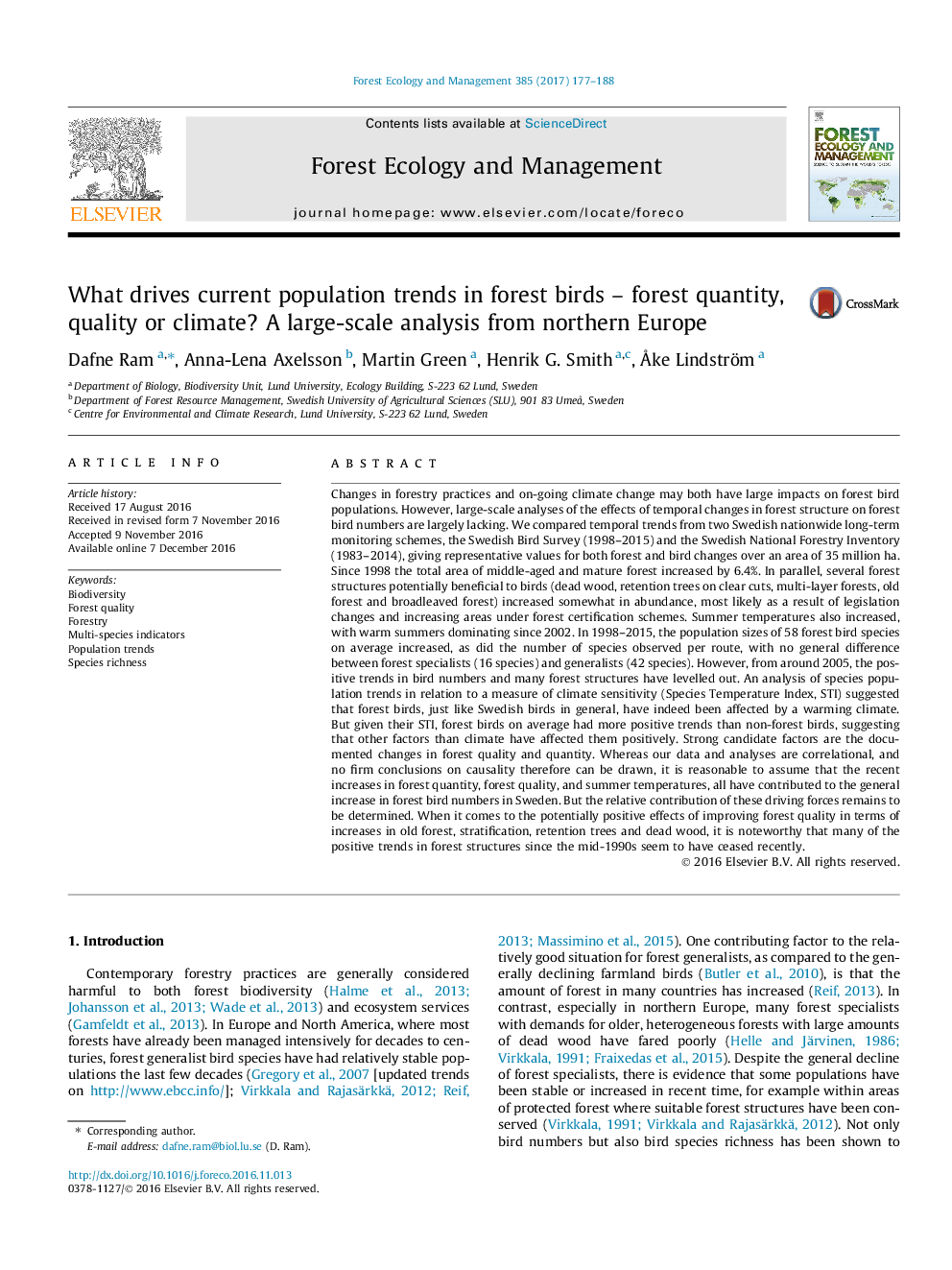| کد مقاله | کد نشریه | سال انتشار | مقاله انگلیسی | نسخه تمام متن |
|---|---|---|---|---|
| 4759576 | 1421373 | 2017 | 12 صفحه PDF | دانلود رایگان |
- Forest structures ecologically important for forest bird have increased.
- Forest bird generalists as well as specialists have increased in numbers.
- The increases in beneficial forest structures and forest birds have leveled off.
- Forest birds have more positive trends than expected from climate change alone.
- Forest quality, forest quantity and climate change have all affected forest birds.
Changes in forestry practices and on-going climate change may both have large impacts on forest bird populations. However, large-scale analyses of the effects of temporal changes in forest structure on forest bird numbers are largely lacking. We compared temporal trends from two Swedish nationwide long-term monitoring schemes, the Swedish Bird Survey (1998-2015) and the Swedish National Forestry Inventory (1983-2014), giving representative values for both forest and bird changes over an area of 35 million ha. Since 1998 the total area of middle-aged and mature forest increased by 6.4%. In parallel, several forest structures potentially beneficial to birds (dead wood, retention trees on clear cuts, multi-layer forests, old forest and broadleaved forest) increased somewhat in abundance, most likely as a result of legislation changes and increasing areas under forest certification schemes. Summer temperatures also increased, with warm summers dominating since 2002. In 1998-2015, the population sizes of 58 forest bird species on average increased, as did the number of species observed per route, with no general difference between forest specialists (16 species) and generalists (42 species). However, from around 2005, the positive trends in bird numbers and many forest structures have levelled out. An analysis of species population trends in relation to a measure of climate sensitivity (Species Temperature Index, STI) suggested that forest birds, just like Swedish birds in general, have indeed been affected by a warming climate. But given their STI, forest birds on average had more positive trends than non-forest birds, suggesting that other factors than climate have affected them positively. Strong candidate factors are the documented changes in forest quality and quantity. Whereas our data and analyses are correlational, and no firm conclusions on causality therefore can be drawn, it is reasonable to assume that the recent increases in forest quantity, forest quality, and summer temperatures, all have contributed to the general increase in forest bird numbers in Sweden. But the relative contribution of these driving forces remains to be determined. When it comes to the potentially positive effects of improving forest quality in terms of increases in old forest, stratification, retention trees and dead wood, it is noteworthy that many of the positive trends in forest structures since the mid-1990s seem to have ceased recently.
Journal: Forest Ecology and Management - Volume 385, 1 February 2017, Pages 177-188
